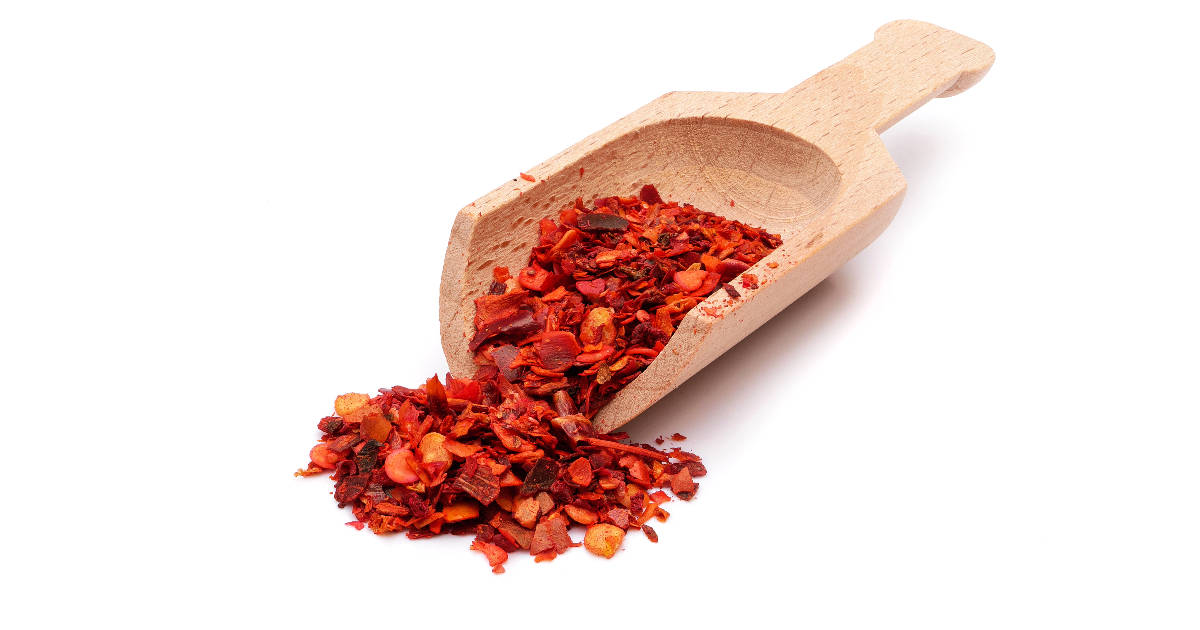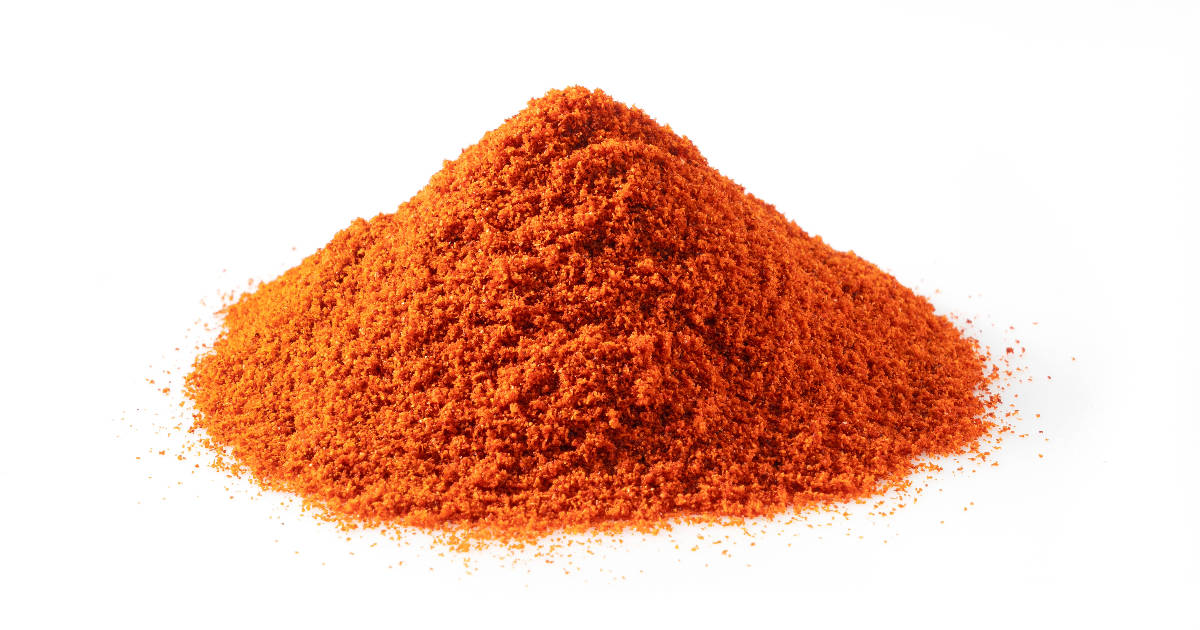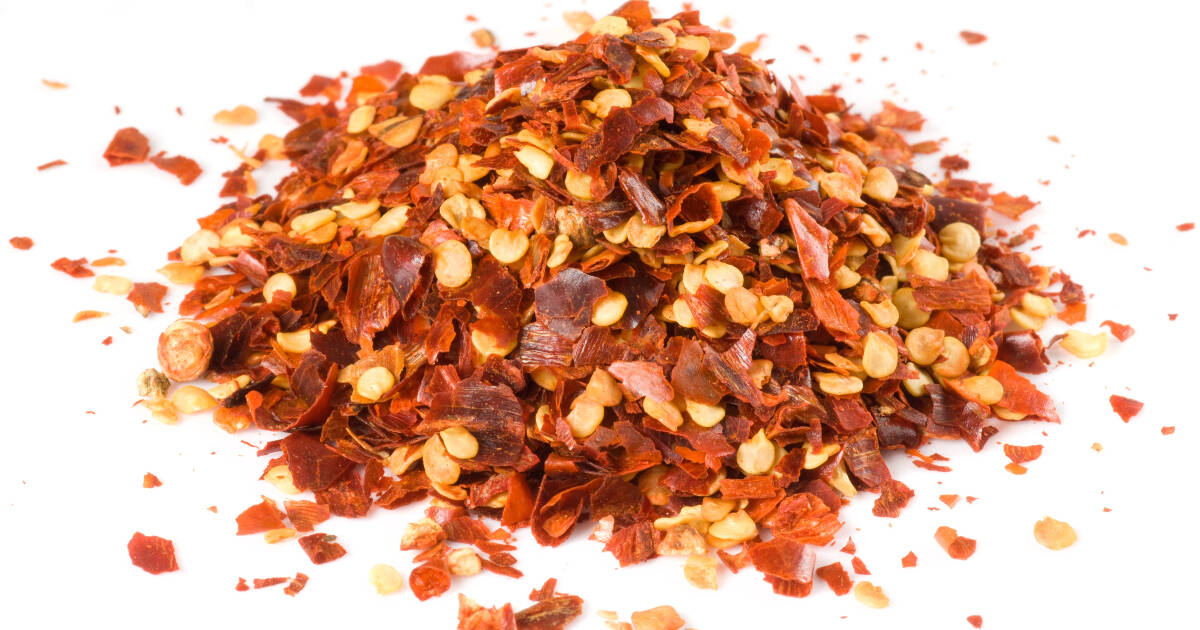Spice up your meals with chili! Both chili flakes and chili powder pack some heat and chili pepper flavor, but they differ in some key ways. Understanding when to use one versus the other can help you get the most flavor and heat from your dishes.

Let us compare chili flakes and chili powder - from texture and heat level to popular varieties and best uses in the kitchen. Read on to become a chili expert!
The Main Differences Between Chili Flakes and Chili Powder
Chili flakes and chili powder are both derived from dried chili peppers and pack some heat, but they differ in several important ways.
Chili flakes are made from crushing dried chili peppers into coarse, flakes. They are simply just dried peppers - no other ingredients added. Chili flakes are often used as a finishing spice, sprinkled on dishes like pasta, pizza, soups, etc. just before serving to add a pop of heat.
Chili powder on the other hand is a spice blend. It contains ground chili peppers mixed with other spices like cumin, oregano, garlic powder, onion powder, etc. So chili powder has a more complex flavor than single-ingredient chili flakes. Chili powder is meant to be cooked into dishes to infuse its flavors throughout. It's commonly used in recipes for chili, Tacos, fajitas, etc.
So chili flakes are a single dried chili pepper ingredient, while chili powder is a blend. Chili flakes also have a coarser texture vs the fine powder of chili powder. And chili flakes tend to be used as a finishing spice, while chili powder is cooked into recipes.
Heat Levels: Chili Powder vs Chili Flakes
When it comes to heat and spiciness, chili flakes generally pack more punch than chili powder. There are two reasons for this:
First, chili powder contains other spices besides hot chili peppers. This dilutes the heat level. Chili flakes on the other hand are pure chilies.
Second, the larger flakes of chili peppers don't integrate as fully into a dish. So you get pockets of heat. The fine chili powder blends in completely allowing its heat to spread evenly throughout. This makes the chili powder seem hotter even though chili flakes may be spicier eaten alone.
So in terms of Scoville units, chili flakes register higher than chili powder. But chili powder can taste hotter when cooked into a dish. For maximum heat, use chili powder in the dish and sprinkle chili flakes on top!
Flavors: Single Pepper vs. Spice Blend
Since chili flakes come from a single type of chili pepper, they have a very focused chili flavor. There may be some fruitiness or smokiness depending on the chili used, but overall fairly one-dimensional heat.
Chili powder contains a blend of spices like cumin, oregano, garlic, etc. This gives it a more complex flavor profile beyond just heat. So chili powder contributes seasoning to a dish, while chili flakes simply provide spicy heat.
Certain chili powder blends like ancho, chipotle, etc. use specific chili peppers. So these can have a more distinctive flavor, like smoky chipotle. But traditional chili powder aims to season dishes like chili or Tacos rather than provide a single chili flavor.
When to Use Chili Flakes or Chili Powder
Use chili powder early in cooking so it can bloom with the other ingredients and permeate the entire dish. Chili powder builds up the flavor as it cooks. Add it to things like chili, sauces, marinades, spice rubs, etc.
Use chili flakes as a finishing touch to any dish that needs a spike of heat. Sprinkle it on top of foods just before eating. Chili flakes give immediate heat and flavor pop without requiring cooking. Great on pizzas, pasta, sandwiches, salads, and more.
Chili flakes also make a great table condiment. Offer them in a shaker so guests can adjust the heat to their preference.
Can Chili Flakes Substitute for Chili Powder?
In a pinch, chili flakes can substitute for chili powder. You'll miss out on the other spices and overall flavor complexity. But chili flakes can provide the heat and red color chili powder would.
Just keep in mind that the texture and way the heat hits will be different. Chili flakes give pops of heat while chili powder infuses sustained warmth. Adjust amounts since chili flakes may seem hotter eaten alone.
For the best flavor, look for substitutes like cayenne or ancho powder that come from dried chilis. Chile pepper powders make the closest substitute for chili powders.
Different Types of Chili Powders

Traditional chili powder is a spice blend containing chili peppers and supporting spices like cumin, garlic powder, oregano, etc. This is the standard chili powder used in most recipes.
Single-pepper chili powders use one specific type of chili pepper. Common varieties include:
- Ancho chili powder - Made from dried poblano peppers. Mild heat with raisin-like sweetness.
- Cayenne chili powder - Made from cayenne peppers. Quite spicy with bright heat.
- Chipotle chili powder - Made from smoked & dried jalapeños. Imparts a smoky flavor.
- New Mexico chili powder - Contains New Mexico chilies. Mildly spicy with sweet & earthy notes.
These single pepper powders allow you to add a specific chili flavor to dishes.
International chili powders bring the local chili peppers of global cuisines.
Examples:
- Korean (Gochugaru) - Sun-dried Korean chilies imparting medium heat & fruity smokiness.
- Indian (Kashmiri) - Made from mild Kashmiri chilies. Vibrant red color with mild heat.
- Middle Eastern (Aleppo) - Created from moderately hot & fruity Aleppo peppers.
Different Types of Chili Flakes

The most common chili flakes are crushed red pepper flakes or red pepper flakes. These are made from dried chili peppers like cayenne, mixed for medium to high heat.
You can also find flakes made from specific chili peppers. Popular examples include:
- Aleppo pepper flakes - Moderate heat with sweet & fruity notes.
- Korean (Gochugaru) flakes - Medium heat with a touch of smokiness.
- Thai chili flakes - Extremely spicy flakes from tiny Thai bird's eye chilies.
- Chipotle flakes - Imparts smoky flavor from dried smoked jalapeños.
- Urfa biber flakes - Turkish chili flakes with medium heat & sweet-smoky flavor.
FAQ
What is the difference between chili paste and chili powder?
Chili paste is made from fresh chili peppers that are pureed into a thick, spreadable paste. Chili powder is made from dried ground chilies. Chili pastes provide fresh chili flavor, while chili powders have a deeper, more complex taste. Chili pastes also tend to be spicier than chili powder blends.
Can you use crushed red pepper instead of chili flakes?
Yes, crushed red pepper is the same thing as chili flakes. Both refer to dried chili peppers crushed into flaky bits. The terms are used interchangeably. Crushed red pepper provides the same spicy heat and chili flavor as chili flakes.
What chili peppers are used to make traditional chili powder?
Most traditional chili powders use a blend of dried peppers like ancho, New Mexico, pasilla, cascabel, and arbol. This mix of mild to moderately hot peppers provides a well-rounded chili flavor with moderate heat. Cayenne powder is sometimes added to amp up the spiciness.
Can you substitute Aleppo pepper for chili flakes?
Yes, Aleppo pepper flakes can replace standard chili flakes. Aleppo peppers are moderately hot with a bit of sweetness and fruitiness. They will mimic the heat of chili flakes but also add a nice complexity. Use the same amount or slightly fewer Aleppo flakes since they tend to be less spicy.
What is the difference between chili flakes and red pepper flakes?
There is no difference - chili flakes and red pepper flakes are the same thing. Both refer to crushed-up dried red chili peppers used as a spicy seasoning. The terms are interchangeable. Some specific chili flakes like Aleppo or Korean are made from certain pepper varieties. But standard chili/red pepper flakes are a mix of hot dried chilies.
Conclusion
Now you know the main differences between chili flakes and chili powder and can use them properly in your cooking. Chili flakes provide concentrated chili pepper heat perfect for finishing and garnishing dishes. Chili powder imparts a more complex, blended flavor and sustained warmth ideal for seasoning recipes.
Try using both in tandem - chili powder in the dish and chili flakes on top. This lets you layer flavors and control the heat. Just start with small amounts and add more chili as needed.

